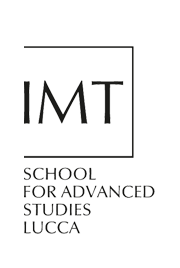Printings
Last update: 5 March 2019
I) Al-Ilāhiyyāt min al-Šifāʾ li-Šayḫ [sic] al-Raʾīs Abū [sic] ʿAlī Ḥusayn Ibn ʿAbd Allāh Ibn Sīnā maʿa taʿlīqāt, copyist ʿAbd al-Karīm al-Šarīf al-Šīrāzī, editors Āqā Mīrzā Ḥusayn, Āqā Mīrzā ʿAbbās, Madrasa Dār al-Funūn, Tehran 1303Hq [= 1885], repr. n.d., pp. 266-567.
Lithographic printing of the Ilāhiyyāt, preceded by the commentary on Ilāhiyyāt I-VI by Ṣadrā al-Dīn al-Šīrāzī (Mullā Ṣadrā, d. 1050H/1640) on pp. 1-264. Based on manuscript(s) whose number and identity remains uncertain, it reports interlinear or marginal corrections, and interlinear or marginal explanatory glosses by several commentators, in which the text under discussion is quoted as lemma. A distinct volume published in the same year contains the lithographic printing of the Natural Philosophy of the Šifāʾ.
Consulted by means of a photostatic reproduction (courtesy J. Janssens) of a reprint with no date, which includes a table of contents of the two volumes and an introduction to the volume containing the Natural Philosophy of the Šifāʾ. In this introduction, Ḥ. Ḥasan Zādeh Āmulī (b. 1928) is mentioned.
Two of the three copies of this lithographic printing available in Tehran, Kitābḫānah-i Maǧlis-i Šūrā-yi Islāmī (see dlib.ical.ir/<wbr></wbr>faces/search/bibliographic/<wbr></wbr>biblioBriefView.jspx) report the same text of the reprint consulted, with different page numbers (partly printed, partly handwritten); in them, the Ilāhiyyāt starts at the page with printed nr. 266 and ends at the page with handwritten nr. 657.
II) Ibn Sīnā, Al-Šifāʾ, al-Ilāhiyyāt (1), ed. Ǧ. Š. Qanawatī, S. Zāyid, al-Hayʾa al-ʿāmma li-šuʾūn al-maṭābiʿ al-amīriyya, Cairo 1960; Ibn Sīnā, Al-Šifāʾ, al-Ilāhiyyāt (2), ed. M. Y. Mūsā, S. Dunyā, S. Zāyid, al-Hayʾa al-ʿāmma li-šuʾūn al-maṭābiʿ al-amīriyya, Cairo 1960.
The standard printing of the work.
Testimonia:
1) Ibn Sīnā 1885 = ط
2) Annotations in Ibn Sīnā 1885 = طا
3) Ms. Egypt, Cairo, Maktabat al-Azhar al-Šarīf, Beḫīt 331 falsafa (ḫuṣūṣiyya), 44988 (ʿumūmiyya) (no date; apparently VII/XIII c.) = ب (siglum B in the present edition)
4) Annotations in 3) = بخ
5) Ms. Egypt, Cairo, Dār al-Kutub al-Miṣriyya, 144 ḥikma (XI-XII/XVII-XVIII cc.; the date of copy of 684H/1285 refers to the exemplar) = ج
6) Ms. Egypt, Cairo, Dār al-Kutub al-Miṣriyya, 894 falsafa (no date) = د
7) Ms. Egypt, Cairo, Dār al-Kutub al-Miṣriyya, 826 ḥikma wa-falsafa (1084H/1673) = ص
8) Ms. United Kingdom, London, British Museum, Or. 7500 (no date) = م
9) Ms. Egypt, Cairo, Dār al-Kutub al-Miṣriyya, 262 ḥikma wa-falsafa (1337H/1918, copied by Maḥmūd Qāsim from an exemplar of 992H/1584) = ه (passim). On the use of this manuscript in the edition at stake, see Bertolacci 2012, pp. 300-301
The most ancient manuscript employed in this edition is ms. 3 (B in the present edition) datable to the VII/XIII c. The colophon of ms. 5 records a date of copying (684H/1285-6) which was likely copied from the exemplar. The manuscript itself might date to the XI-XII/XVII-XVIII cc.
Despite the wide recourse to manuscripts from Cairo, the most ancient codex of the Ilāhiyyāt preserved in Cairo libraries (Egypt, Cairo, Dār al-Kutub al-Miṣriyya, Aḥmad Taymūr Pāšā 140, VI/XII c., siglum T in the present edition) is disregarded, possibly because of its composite nature.
III) Ibn Sīnā, Al-Ilāhiyyāt min Kitāb Al-Šifāʾ, ed. Ḥ. al-Āmulī, Maktab al-Iʿlām al-Islāmī, Markaz al-Našr, Qum 1418Hq, 1376Hš/1997-8.
In the introduction, the edition is said to have been completed in 1403Hq, 1361Hš/1982, according to “a number of manuscripts ... preserved in our private library” (p. 5). The actual number of the manuscripts employed remains uncertain: some footnotes to the text point to six items (see the "five manuscripts" mentioned as bearing a reading different from a further, sixth, "manuscript", at p. 278, n. 2), whereas the photomechanical reproductions of the incipits and explicits of the manuscripts consulted which are printed at the end of the book amount to only five items.
No critical apparatus is given, and variants are recorded in footnotes: the siglum نسخة stands for variants in the manuscripts consulted, whereas the siglum خ ل is presumably employed to indicate corrections in the manuscripts consulted. The footnotes also include brief doctrinal explanations, references to other parts of the Šifāʾ, quotations of works of Mullā Ṣadra and other authors.
The Cairo edition is occasionally mentioned (see, ex. gr., p. 330, n. 6). On account of the many cases of agreement between Āmulī and the Cairo edition against all the other witnesses consulted in Bertolacci 2006, pp. 483-558, we can surmise that Āmulī relies on this edition more frequently than he declares.
IV) Ibn Sīnā, Al-Šifāʾ (al-Ilāhiyyāt), with Marginal Notes by Mullā Ṣadrā, Mīrdāmāḍ, Khunsarī, Sabzavārī and others, ed. Ḥ. Nāǧī Iṣfahānī, Society for the Appreciation of Cultural Works and Dignitaries, Institute of Islamic Studies of Tehran, McGill University, Tehran 1383Hš/2004.
Edition of Ilāhiyyāt I-II, with the corresponding commentaries of Ṣadrā al-Dīn al-Šīrāzī and other major commentators.
Testimonia:
1) Ms. Tehran, Millī Malik, 1085 = ل
2) Ms. Mashad, Āstān Quds, XI, 7347 [incompl.: I-IX] = ق
3) Ms. Oxford, Bodleian Library, Pococke 117 [incompl.: I-IV] + 110 [incompl.: V-VIII, 6] = ب
4) Ms. Khūy, Madrasa Namāzī 248 = س
5) Ms. Tehran, Dānišgāh, 4214, Miškāt 242 = م
6) Ms. Mashad, Āstān Quds, 5662 = الف
7) Cairo 1960 = ص
8) Ibn Sīnā 1885 = ط
V) İbn Sînâ, Kitâbu'ş-Şifâ, Metafizik, ed. and transl. E. Demirli, Ö. Türker, 2 vols, Litera Yayıncılık, Istanbul 2004-5, 2013, 2017, 2018; repr. Vakıflar Genel Müdürlüğü Yayınları, Istanbul, 2014.
Arabic text, with facing Turkish translation, reconstructed on the basis of II) and two Istanbul manuscripts:
1) Turkey, Istanbul, Süleymaniye Kütüphanesi, Ayasofya 2442 (ms. S in the present edition)
2) Turkey, Istanbul, Süleymaniye Kütüphanesi, Carullah 1424 (Sf) (ms. Sf in the present edition)
No critical apparatus.
VI) Ibn Sīnā, Al-Ilāhiyyāt min Kitāb Al-Šifāʾ, ed. A. al-Sayāḥ, T. Wahba, Dār al-Ḫulud li-l-Turāṯ, Cairo 2009.
Reprint of II). No critical apparatus. “The manuscripts of the work that we have consulted are numerous and abundant, especially in the libraries of Tehran” (p. 69 of the Introduction).
Philosophy on the Border of Civilizations and Intellectual Endeavours:
Towards a Critical Edition of the Metaphysics (Ilâhiyyât of Kitâb al-Šifâʾ) of Avicenna (Ibn Sînâ)
ERC Advanced Grant 339621
Scuola Normale Superiore, Pisa, Italy
Piazza dei Cavalieri, n. 7
IMT School for Advanced Studies, Lucca, Italy
Piazza S. Ponziano, n. 6
Mail: info@avicennaproject.eu



